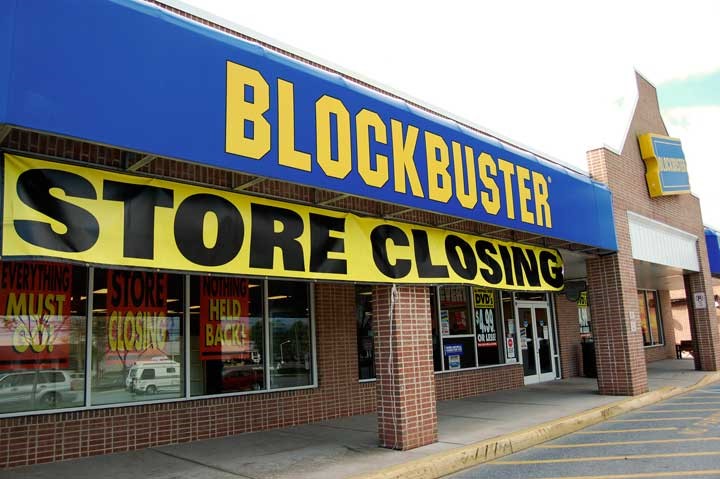When I was in the first and second grade, my family carpooled with another family for our private day school. One of the great things about that family is that the father owned a greeting card store and occasionally I’d get packages of trading cards. Little did I know, but that struggling greeting card store had something unique in 1979: VHS video rental.
In 1979 in Brooklyn, not many people knew what a VHS or VCR was. When my parents bought our first VHS VCR, we bought it through this family for $700 and that family was kind enough to throw in a free lifetime membership to rent (stores used to charge for membership in 1982). By the time 1984 was rolling around, they no longer sold anything resembling greeting cards and the whole store was video rentals. Soon there was a video rental place every block and by the early 1990’s, one company stood out in the video rental business (and putting mom and pop video rental shops out of business) and that was Blockbuster Video.
Blockbuster Video grew under the leadership of Wayne Huzienga. At its peak, they had 9,000 stores. Viacom bought Blockbuster in 1994 for $8.4 billion. $8.4 billion!
VHS tape rental in the late 1990’s was being replaced by DVD rental and Blockbuster’s main competition at the time was Hollywood Video, but someone with red envelopes was going to make an impact.
In 2000, I bought my first DVD player and there was a small red envelope in the box that talked about a DVD rental by mail program. That company was Netflix. When I saw the envelope, I signed up. Who needs the hassle of going to Blockbuster when Netflix had a much better selection and would immediately send you a DVD in your queue when they got one back. I knew then that Blockbuster was going to be in trouble, but apparently Netflix didn’t because they weren’t doing too well at the time.
Netflix had such a tough go of it that they actually contacted Blockbuster in gauging their interest in buying them. Around the time I got that envelope in my new DVD player box, Netflix founder Reed Hastings approached Blockbuster CEO John Antioco and asked for $50 million to buy Netflix. It made sense since Blockbuster didn’t have a DVD by mail program.
Antioco saw Netflix’s DVD by mail business as “very small niche business,” so he ended the negotiations and didn’t buy Netflix. Netflix saw that their business was a niche business and that the future was streaming. So I was wrong in a way because Blockbuster’s extinction was because streaming and video on demand services made DVD rental obsolete. Netflix knew that their DVD by mail business was obsolete, so they bet the house on streaming and won big. Their valuation is now north of $30 billion with over 50 million subscribers. Blockbuster went into the DVD rental by mail business and VOD a little too late to make a difference. Blockbuster was dead by 2013 because leadership and vision are two different things and Antioco didn’t have the vision to see that Blockbuster’s days as a DVD rental place was numbered and streaming was the future.







